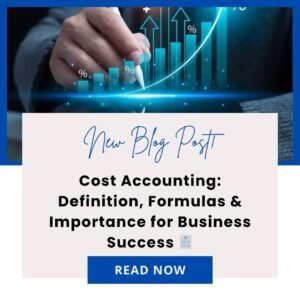At times, businesses might find it difficult to comprehend certain financial aspects due to their lack of knowledge of basic accounting terms. Sounds relatable? Fret not! We have created a list of 10 basic accounting terms that you need to know in 2023. Stay with us and read on.

1. Accounts payable(AP)
Accounts payable, also known as payables, can be described as the aggregate amount of a company’s short-term obligations owed to its creditors or suppliers. It appears on your organisation’s balance sheet as a current liability.
In case your AP increases over a prior period, it means your business is purchasing more goods and services on credit rather than making cash payment. On the other hand, if the AP decreases, it implies that your company is paying on its prior period obligations at a faster rate rather than purchasing new products or services on credit.
2. Accounts receivable (AR)
Accounts receivable is the total amount that your customers owe you for the goods or services delivered to them. It is listed on the balance sheet as a current asset and tends to add more value to your organisation.
3. Balance sheet
It is a financial statement that tends to report your company’s assets, liabilities, and shareholder’s equity. You can think of a balance sheet as a snapshot of your company’s finances. Now, there are two main areas on the balance sheet. Left side consists of the assets while the right side contains the liabilities and shareholder’s equity.
4. Cash flow
Cash flow can be defined as the net amount of cash and cash equivalents that are transferred in and out of a company. All the cash that is received represents inflows while all the money that is spent is called outflows. With a cash flow statement, it becomes easier to make accurate financial predictions.
5. General ledger
The general ledger is described as a master accounting document. It tends to offer a complete record of your company’s financial transactions over a certain period of time. The transactions include revenue, expenses, equity, and changes to assets and liability accounts. A general ledger provides you with a detailed picture of every transaction for a particular month, quarter, or year. The best part is that it easily helps you spot unusual accounting transactions.
6. Accrual accounting
It is a financial accounting method in which a company records revenue before receiving payment for goods and services sold and records the expenses as they are incurred.
Accrual accounting follows the matching principle. It means that the revenue and expenses will be recognised in the same period. With this accounting method, the current and future cash inflows and outflows can be combined. This way, you’ll get a clearer picture of your company’s current and long-term finances.
7. Cash accounting
In this accounting method, the payment receipts are recorded during the period in which they are received while the expenses are recorded in the period in which they are actually paid.
Cash accounting is generally used by small businesses because it is simple and straightforward. You can know the exact amount your business has on hand.
8. Cost of Goods Sold
Cost of Goods Sold(COGS) refers to the direct cost of producing the goods sold by your company. It is regarded as a business expense and is found on your business’ income statement. COGS is important for tax reporting purposes. If you’re a business that makes and sells a product or buys and resells a product, you need to calculate COGS and mention your expense. This way, the total amount of the taxes that you need to pay can be decreased.
9. Assets
Assets can be described as all the resources that your business owns or controls. It is something of value that a company expects will provide future benefits. Assets are listed on your balance sheet and they can be classified into three main types:
-
On the basis of cash convertibility
- Current asset – It can be converted into liquidity within a year.
- Fixed asset – It cannot be converted into cash immediately.
-
On the basis of physical existence
- Tangible assets – It includes cash, coins, equipment, machinery, office, and others.
- Intangible assets – It includes patent and copyrights, trademark, account receivable, and others.
-
On the basis of usability
- Operating assets – It includes those assets that are required in conducting day to day business operations like machinery, cash, etc.
- Non-operating assets – It includes those assets that are not required for day to day business operations.
10. Liability
Liability is described as something which a company owes, usually a sum of money. It is listed on the right side of the balance sheet. Loans, accounts payable, mortgages, deferred revenues, bonds, accrued expenses, and warranties come under liabilities.

Wrapping up
We hope our article helped you comprehend some of the most basic accounting terminology that is essential to deal with the crucial financial aspects related to your business. Stay on top of your business health by taking active participation in all the matters concerning your organisation’s finance.




